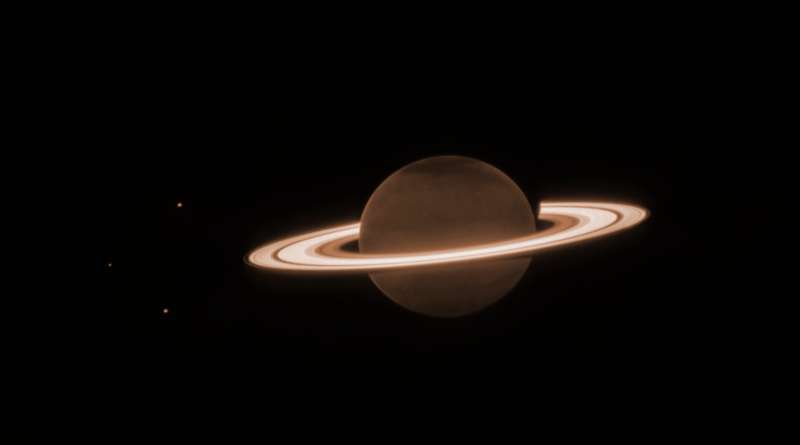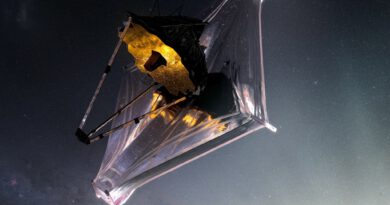Webb telescope’s photo of Saturn looks really weird. Here’s why.
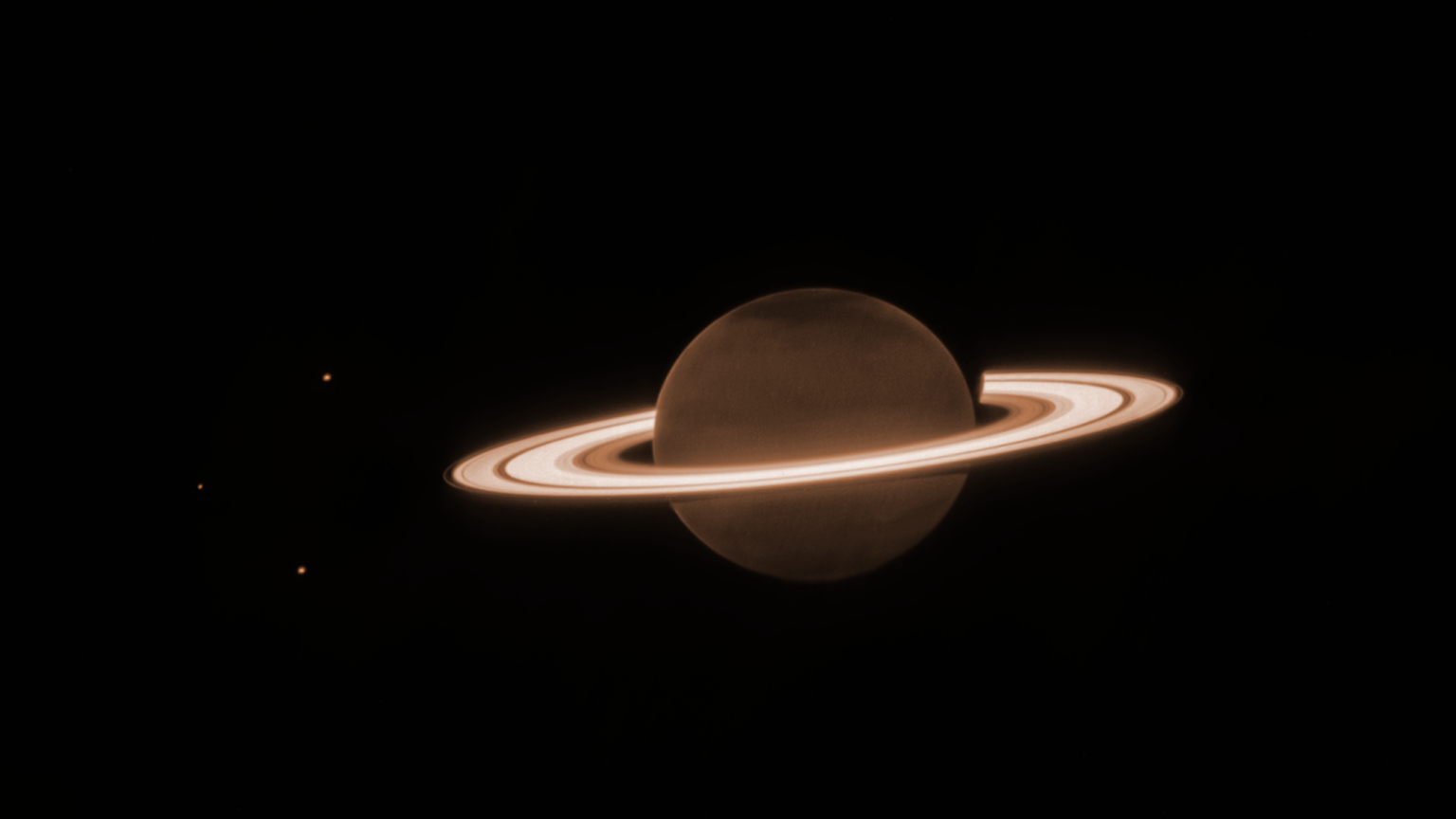
Hello, Saturn.
The James Webb Space Telescope — the powerful observatory that often views galaxies billions of miles away — recently peered at a much closer cosmic object, the gas giant Saturn. Located some 800 million miles from Earth, this world is famous for its glorious rings, which are even visible with backyard telescopes. Yet this latest image from Webb shows Saturn like never before.
“The initial imagery from Webb’s NIRCam (Near-Infrared Camera) is already fascinating researchers,” said NASA.
Unlike the legendary Hubble telescope, which views light we can see (aka “visible light”), the Webb telescope views a type of radiation that travels in longer wavelengths, called infrared, which reveals different insights and characteristics about objects in space.
That’s why this new view of Saturn looks so unusual. Here’s what you’re seeing:
-
Vivid rings: Saturn’s rings appear absolutely brilliant. The rings, composed of ice and rock fragments ranging in size from sand grains to mountains, reflect lots of infrared light.
-
The dark planet: Conversely, the gaseous planet itself appears dark. Methane in Saturn’s atmosphere soaks up sunlight rather than reflecting it. The world’s north pole looks “particularly dark,” notes NASA, possibly owing to a still-unknown summertime process in its atmosphere.
-
Fascinating moons: Three of Saturn’s moons, Dione, Enceladus, and Tethys, are visible as radiant dots. Enceladus is one of the most intriguing worlds in our solar system: The heavily-researched moon shoots plumes of its ocean more than 6,000 miles high into space. Could this moon potentially harbor life?
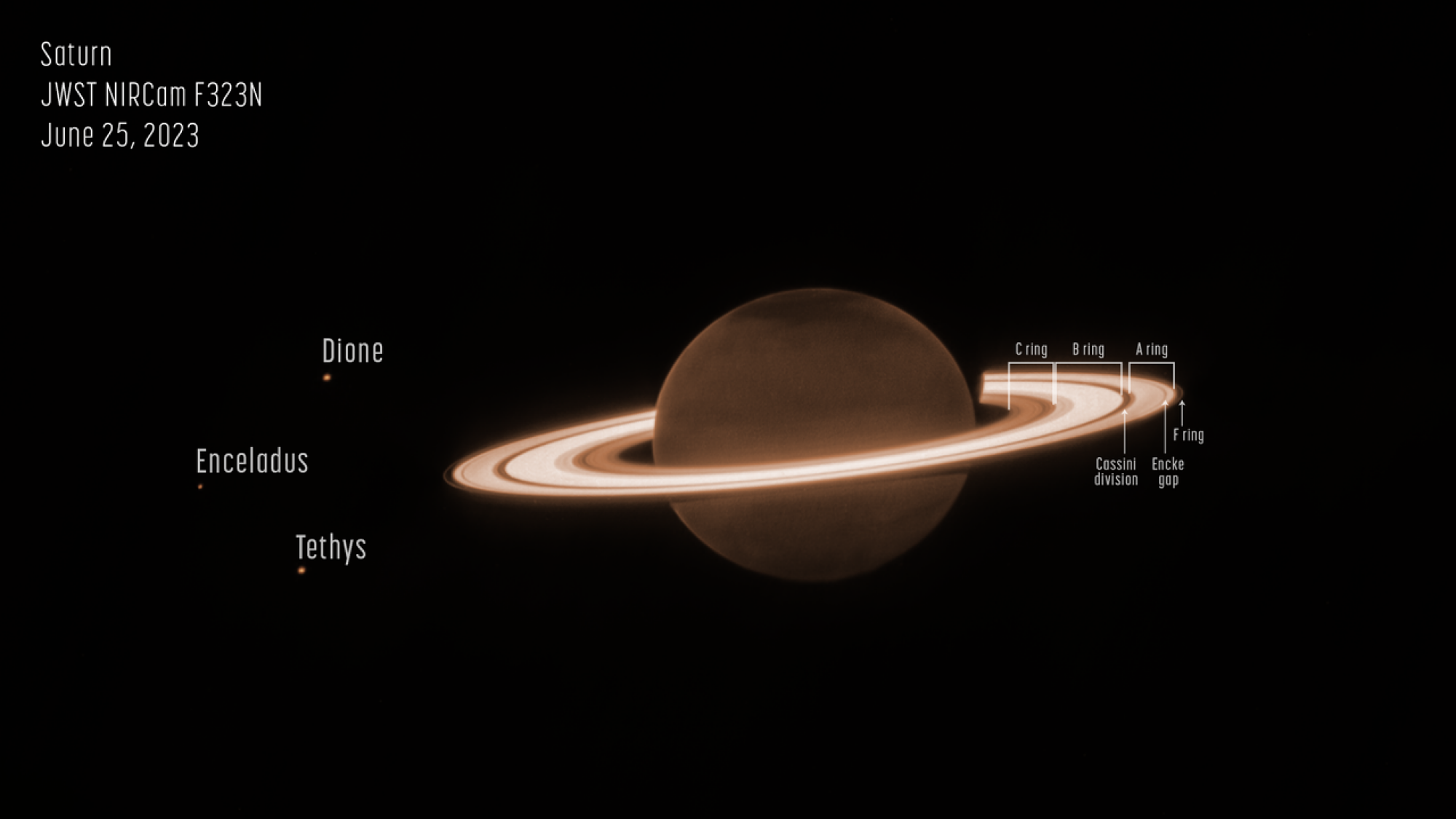
Want more science and tech news delivered straight to your inbox? Sign up for Mashable’s Light Speed newsletter today.
This rare infrared view of Webb is also meant to detect even more moons around Saturn, a planet around 10 times the size of Earth with 145 known satellites. “Any newly discovered moons could help scientists put together a more complete picture of the current system of Saturn, as well as its past,” NASA explained.
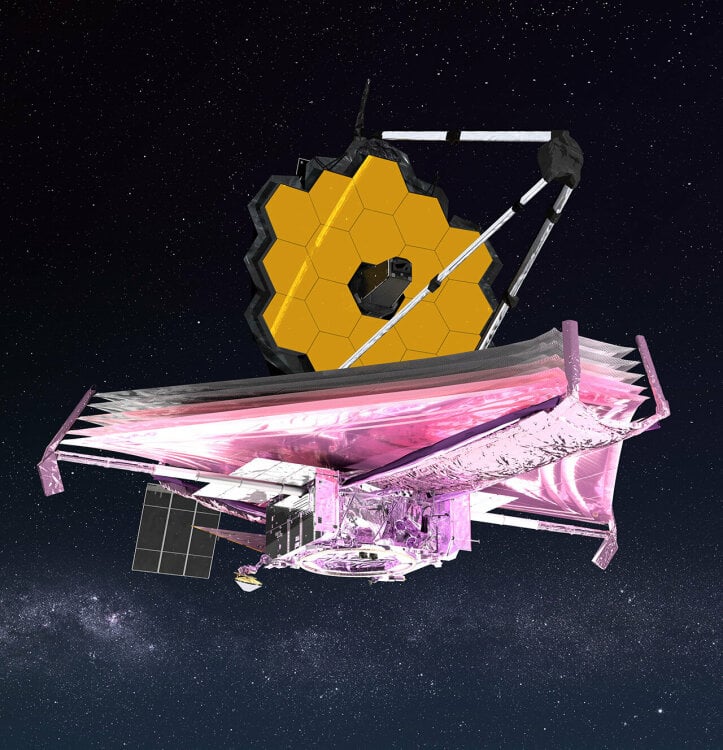
The Webb telescope’s powerful abilities
The Webb telescope — a scientific collaboration between NASA, the ESA, and the Canadian Space Agency — is designed to peer into the deepest cosmos and reveal unprecedented insights about the early universe. But it’s also peering at intriguing planets in our galaxy, and as you know, even the planets in our solar system.
Want more science and tech news delivered straight to your inbox? Sign up for Mashable’s Light Speed newsletter today.
Here’s how Webb is achieving unparalleled things, and likely will for decades:
– Giant mirror: Webb’s mirror, which captures light, is over 21 feet across. That’s over two and a half times larger than the Hubble Space Telescope’s mirror. Capturing more light allows Webb to see more distant, ancient objects. As described above, the telescope is peering at stars and galaxies that formed over 13 billion years ago, just a few hundred million years after the Big Bang.
“We’re going to see the very first stars and galaxies that ever formed,” Jean Creighton, an astronomer and the director of the Manfred Olson Planetarium at the University of Wisconsin–Milwaukee, told Mashable in 2021.
– Infrared view: Unlike Hubble, which largely views light that’s visible to us, Webb is primarily an infrared telescope, meaning it views light in the infrared spectrum. This allows us to see far more of the universe. Infrared has longer wavelengths than visible light, so the light waves more efficiently slip through cosmic clouds; the light doesn’t as often collide with and get scattered by these densely packed particles. Ultimately, Webb’s infrared eyesight can penetrate places Hubble can’t.
“It lifts the veil,” said Creighton.
– Peering into distant exoplanets: The Webb telescope carries specialized equipment called spectrometers that will revolutionize our understanding of these far-off worlds. The instruments can decipher what molecules (such as water, carbon dioxide, and methane) exist in the atmospheres of distant exoplanets — be it gas giants or smaller rocky worlds. Webb will look at exoplanets in the Milky Way galaxy. Who knows what we’ll find.
“We might learn things we never thought about,” Mercedes López-Morales, an exoplanet researcher and astrophysicist at the Center for Astrophysics-Harvard & Smithsonian, told Mashable in 2021.
Already, astronomers have successfully found intriguing chemical reactions on a planet 700 light-years away, and the observatory has started looking at one of the most anticipated places in the cosmos: the rocky, Earth-sized planets of the TRAPPIST solar system.
